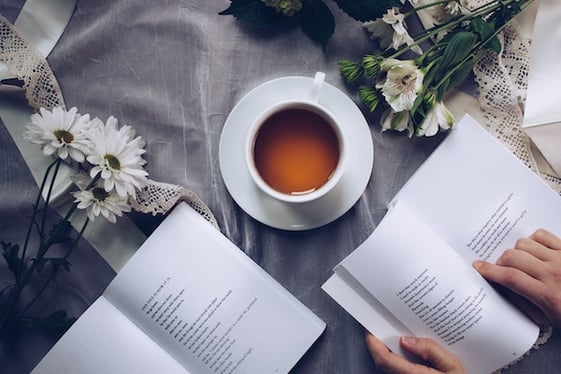
Irony is one of the great forces of language and literature. Irony calls on us to use our wit and instinctual understanding of right and wrong, and often requires that we see humor where there is none. Some say that irony is as old as literature itself, and they may be right— in the human condition, we have always sought to find meaning in paradoxes. Since irony is so ubiquitous, it’s important to understand the different types of irony, and how or when they’re used. You'll be able to identify the different types, and call out the right and wrong ways to use them.
What Is Irony?
In short, irony is a literary or rhetorical device that states or shows the opposite of what is actually true for humorous or emphatic effect. Irony states to contrary to what is meant, but in a way that still makes the actual meaning understood.
Many people use sarcasm in their everyday interactions, which is one form of verbal irony. For example, when discussing an upcoming dentist appointment, you might say in an overly excited voice, “I can’t wait!” This is one type of irony (we’ll get to the types soon!) and shows that irony is deeply ingrained into the way we communicate.
If you’re not a naturally ironic person, you may be wondering why writers use irony in novels. Wouldn’t it just make more sense to say what they mean? While you’re not wrong, using all types of irony can help create suspense, invoke particular emotions, or inform our opinion of a character and their motivations. When we discuss the types of irony, we’ll go more in depth as to how and why a writer might use irony, and what they hope to achieve.
The 3 Types of Irony
Situational Irony
Situational irony is when the outcome of a situation is different than our expectations. Situational irony can be used to create drama, to drive home to realities of a tragedy, or to create humor. You'll find situational irony often in books and plays, as well as movies and TV. This type of irony helps us and the character make sense of their reality, and weaves together humor and tragedy.
Here are some examples of situational irony
General: A friend posts on social media about how social media is killing society and we all need to interact in person
Humor: A thief on the run gets into a getaway car but it's out of gas
Tragic: In Guy de Maupassant's short story The Necklace, Mathilda borrows a necklace from a wealthy friend and loses it. She and her husband go into crippling debt and wind up in poverty to replace the necklace, only to find out years later that the original necklace was a fake to begin with.
Dramatic Irony
Dramatic irony is a device employed by storytellers wherein the audience is aware of what’s going on, but the characters are not. Dramatic irony includes three phases: Installation, when the audience is informed of something the character does not know. Exploitation, using the information to develop curiosity and an emotional response from the audience. Resolution, what happens after the character finds out the information.
Romeo and Juliet's death scene is a great example of dramatic irony. We the audience/reader know that Juliet is drugged to fake her own death, but Romeo does not. So, we watch Romeo commit suicide, knowing that Juliet is alive, and that he too would know the truth if he'd waited. In this example, the installation is earlier in the play, when we learn of Juliet's plan, aware that Romeo does not know. Exploitation is when we watch their death scenes unfold. And the resolution is the end of the play, when the families find out what happened and finally end their feud.
Another well-known example is the story of Oedipus Rex. Dramatic irony was first invented for us in Greek dramas. So while most of us modern readers know the story mainly through the play, ancient Greek play-goers would have been well-informed on the story of Oedipus before going into the play. The Greek audience was able to watch the story unfold with this knowledge already in mind, even though the main character, Oedipus, is unaware. This creates dramatic tension throughout the story and adds a new emotional layer to this classic myth.

Verbal Irony
As we discussed, verbal irony is an important tool in speech. Verbal irony is also an important tool in writing. Verbal irony occurs when a person of character says one thing but means another.
I mentioned above that sarcasm is one form of verbal irony. But remember, the definitions of sarcasm and verbal irony are not interchangeable, and sarcasm is only one form of verbal irony. Sarcasm is generally a little harsher than overall verbal irony, and verbal irony can also include double entendre, over- or under-exaggeration, and rhetorical questions.
Writers may use verbal irony to prove a point, or to help us better understand a situation or character. If a character uses verbal irony, that irony may be in reference to the plot, but also may be in reference to the character's own emotions. Verbal irony, can give us insight into a character’s true state, and challenge us to look deeper into that character’s motivations.
Verbal irony can also be used in a more general sense to bring humor to the novel, play, movie, etc. Verbal irony also helps us develop analytical skills, since it requires us as readers to pay attention to the nuances of dialogue and language.
Satire is one example of verbal irony that carries throughout an entire text.
There are actually quite a few instances of verbal irony in the Harry Potter series. In The Order of the Phoenix, Aunt Petunia asks Harry why he keeps watching the news. He replies, “Well, it changes every day, you see.” Though Harry is offering a truthful response on the surface, as readers we can tell that his answer is contemptuous, and his meaning (to point out how silly Aunt Petunia’s inquiry is) contradicts with the actual words he speaks. If read in the right tone, this conversation definitely will at least get a giggle.
As we discussed, over exaggeration is one form of verbal irony we also use commonly. If someone laughs at a joke and says “I laughed so hard I almost exploded!” This is over exaggeration and one form of verbal irony, since clearly, the person didn’t almost explode from laughter, and the statement contradicts with reality.

How to Tell the Different Types of Irony Apart
Remember, writers use irony to make a point about the distinction between appearance and reality. Usually, use of irony is also meant to drive home a point about the theme or symbolism. To gain a full understanding of the text and the purpose of using irony, you have to know the type of irony being used.
Identifying Situational Irony
Situational irony can be a little harder to identify. Chances are, you've read or witnessed situational irony and had a reaction without thinking to yourself, "hey, this is situational irony." Situational irony can be funny, sad, or everything in between. Here are some important questions to ask yourself:
Does the outcome of the situation differ from your expectations?
Are both you and characters aware that the outcome is different than the expectations?
Does the difference in expectations versus reality elicit a funny, tragic, or otherwise emotional response?
The famous car sing-along song, Ironic by Alanis Morissette, is filled with situational irony; we know it's situational because each lyric explains an event, and an outcome that differs from our expectations. It is not verbal because no one is speaking, and not dramatic because the audience i.e. the listener, knows the same amount of information as the "characters" in the song. The lyric "He won the lottery and died the next day," for example clearly is a case of situational irony.
Identifying Dramatic Irony
The most important element of dramatic irony is that the audience knows something that the characters do not. Because we're usually aware as an audience what the characters do or do not know, dramatic irony should be relatively easy to identify.
When identifying dramatic irony, we have to ask ourselves: does it follow the trajectory of dramatic irony: Installation, exploitation, and resolution? Does the gap in knowledge between the audience and the characters increase or create tension? If the answer is yes, you're probably looking at dramatic irony.

Identifying Verbal Irony
One key part of verbal irony is that it is spoken out loud by a character. Since we use verbal irony so often in our speech, this type of irony may be immediately clear to you. However, nuances of speech are much harder to get across on paper, so you can ask yourself a few questions to help figure out the context, and confirm whether or not verbal irony is being used.
Read the scene carefully. Remember that verbal irony can have many tones! It can be playful, contemptuous, snarky, etc. So if you think characters are using verbal irony, you can ask yourself the following:
What else is going on in the scene? Is there a reason a character would be utilizing verbal irony? Do they have a point to prove?
What is the relationship between the character speaking and the character(s) being spoken to? Would the speaking character need to use verbal irony to get a point across?
Now that you've mastered irony in all its forms, take care not to overuse it. Ironically, irony can often be overused and overwrought. But definitely do use these tips to identify all three types of irony to better understand your test questions or reading materials. Authors employ all types of irony in their work, and it's an important part of finding meaning in books as well as in everyday life.
What's Next?
Irony isn't the only thing you need to know. Check out the 31 Literary Devices You Must Know and expand your knowledge of the Most Useful Rhetorical Devices while you're at it.
Getting ready for your AP tests? Make sure to check out our Expert Guides to the AP Literature and the AP Language and Composition tests.










